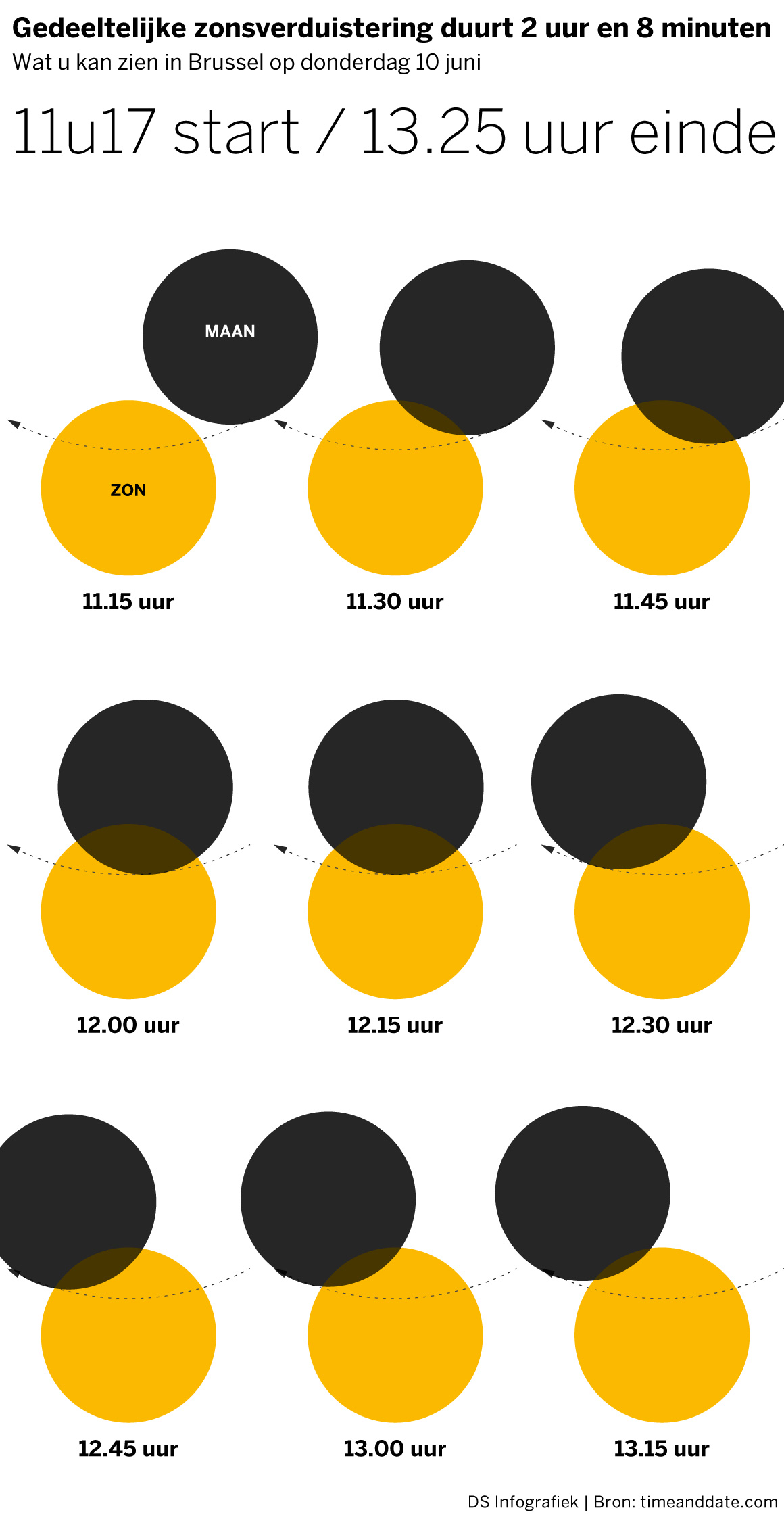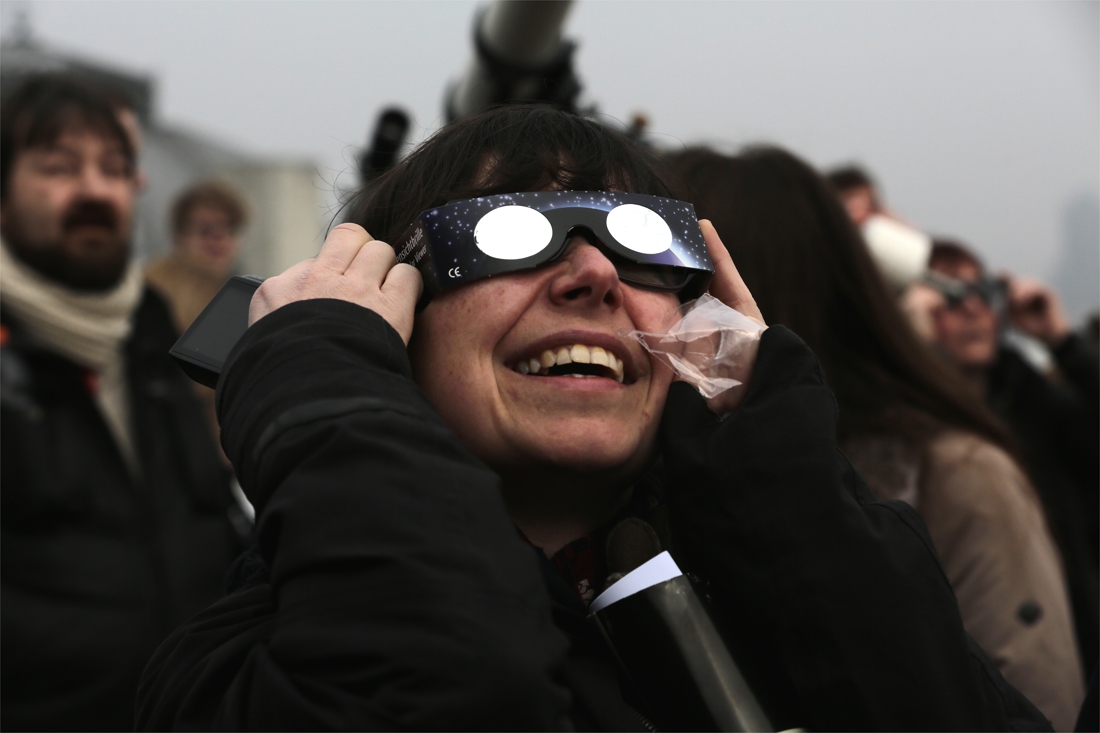An annular eclipse will take place high in the north on Thursday. In Belgium, the celestial phenomenon will be partially visible. If you want to admire the phenomenon, you should wear eclipse glasses to protect your eyes. The observatories welcome visitors for a closer look at the eclipse.
–
At 11:17 a.m. GMT, the moon and the sun will make contact for the first time. The sun is then at an altitude of 50 degrees in the east-southeast. As the sun moves higher in the sky in a more southeasterly direction, the eclipse also gradually increases.
At 12.19 pm, the maximum eclipse can finally be observed, which will cover about 26 percent of the solar diameter from Brussels. At that moment the sun is already at an altitude of 58 degrees.

Then the moon gradually disappears from before the sun. At 1:25 p.m., the moon makes its last contact with the sun and the eclipse is over.
This Nasa animation shows how the moon’s shadow moves across the Earth on Thursday
Eclipse glasses or cardboard box
If you want to observe the solar eclipse, you must protect your eyes with a sun filter. The well-known eclipse glasses are a simple and safe method. Because the demand for these glasses is high, the Public Observatory of Urania has set up a collaboration with the General Professional Opticians and Optometrists Association. As a result, eclipse glasses are available in 86 opticians. Strong welding goggles are also suitable.
There are no other safe ways to look directly at the sun. A black photo negative or a self-sooted sheet of glass is not black enough. The aluminum layer in a CD is too thin.
If you haven’t got your hands on glasses, you’ll have to do like the astronomers: look not at the sun, but at its shadow. Poke a hole in a piece of cardboard and hold a piece of paper behind it. On it you see the image of the sun.
The better observer uses a cardboard box, with a nail hole in one of the short sides, close to the bottom. In the deluxe version, you paint the inside of the box black, except for the side opposite the hole, which you cover with white paper. Hold the box over your head, with the hole to the back, and stand with your back to the sun. After some aiming, the image of the sun appears on the inside of the box. It looks strange to bystanders, but you have a good and safe view of the eclipse.
Telescope
An alternative is to one of the observatories who today welcome visitors to use the telescopes with adapted filters. The public observatory Armand Pien also makes telescopes available in the Provincial domain Het Leen in Eeklo, at the visitor center of the Bourgoyen in Mariakerke, and on Sint-Pietersplein in Ghent.
Maximum eclipse in Baffin Bay
The phenomenon is not only seen with us. There is also a partial eclipse elsewhere in Europe, North America and Asia. The solar eclipse can be seen as annular in Canada, Greenland and Russia. The point of maximum eclipse is in Baffin Bay between Northern Canada and Greenland. That is where the sun’s coverage is greatest. Viewed from there, 97 percent of the solar diameter or 89 percent of its surface will be covered by the moon.
– .


